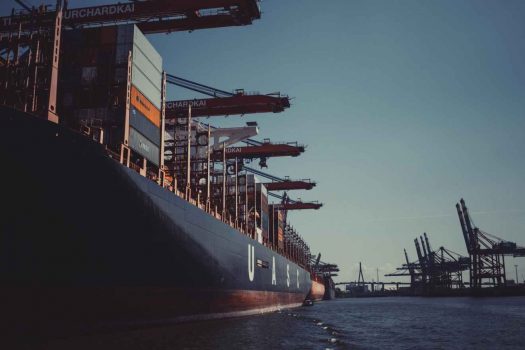
There is no doubt that the African Continental Free Trade Area (AFCFTA) is Africa’s most forward-looking continental agreement. It places Africa as an emerging global trade leader. It offers the potential to reform our markets, economies, and manifest destiny of our people if it is fully implemented. The World Bank describes this pact as the largest free trade area regarding the number of participating countries. It consists of Fifty-five (55) countries with a 1.3 billion population and a combined GDP value of $3.4 Trillion. AfCFTA can lift over 30 million people out of extreme poverty. Including 68 million people who live on less than $5.50 a day out of moderate poverty.
AfCFTA objectives will not be attainable without a comprehensive strategic plan backed by investment in infrastructure by African nations. It is important to recognise inter-modal transportation will be a primary driver to AFCFTA. Failure to have a seamless transport system will compromise interconnectivity and networking within the continent. This will hinder the progress of AFCFTA since it is hinged on the free movement of goods, services, and persons. The European Union adopted an EU Transport policy to ensure mobility amongst its member states. The policy enables a single European transport area which allows for fair and competitive modes of transport.
Lack of Connectivity
Unfortunately, connecting with most African nations through transport modes such as air, rail and road come with major hindrance. There is a lack of road and rail infrastructure that interconnects to member states and high freight charges. Unlike Africa, the European Union member states have a solid road and sea transport infrastructure that connects them. One-third of goods transported intra-EU is done by sea, representing 40%, 44% by road and 9% through rail. Road transport is the most viable mode of transport of goods intra-EU due to its robust motorway system. Seamless cross-border transition is also a major catalyst of the single market.
Therefore, Africa must prioritise what works for it. This must be based on the level of infrastructural development, cross border transition, convenience, and freight cost. Sea transport presents itself as a vital option for the cheap movement of large cargoes across long distances. The first goods that were transported under the AFCFTA pact were shipped by sea. On the 4th of January 2021, goods went by sea transport from Ghana to Guinea. Indeed, landlocked African countries are mostly dependent on neighbouring port nations for their trading.
The maritime industry in Africa needs a sharp focus and a developmental strategy to realise the full potential of AFCTA. The issue of port expansion is hot on the burner. Without such an expansion, we cannot handle the capacity of both import and export of goods.
Port Infrastructure
The port infrastructural development in Africa is of utmost importance. There are only three African ports featured in the 2020 list of 100 global container ports. Port Said in Egypt, Tanger Med in Morocco and Durban in South Africa. Together they have a combined effort of handling a 51% share of goods carried by sea transport in Africa. There is massive port infrastructure development happening all over the continent. This offers the impetus for the maritime transportation of goods across the continent.
According to the world bank, dwell time in Sub-Saharan African ports averages 20 days. This figure has reduced drastically in recent years, yet still far off from the 4-day global average. There must be a consented effort to remove the bottlenecks within the African maritime transport. Simplifying administrative processes increased port capacity, and operational efficiency will make the port efficient. In addition, expansion of storage capacity and connection to the hinterlands will reduce the dwelling time and high freight cost.
Fleet Ownership
Fleet ownership within the continent is very low and can impede the optimization of AFCFTA. Therefore, investments in ship acquisition and management with a strong ship financing arrangement is needed to drive this agenda.
Intra-African Trade
Currently, intra-African trade is quite low, estimated at 15% compared with 61% in Asia and 67% within the European Union. Research indicates that transport prices account for 15% to 20% of the cost of imported goods. Therefore, reducing the cost of transport is likely to increase intra-African trade to about 25%. Also, 40% of the final cost of goods to the consumer is high freight charges.
To promote intra-trade sea transport, the European Union established the Shortsea Promotion centres (SPC) in all its coastal member states. The SPC coordinate and collaborate the smooth movement of goods within a European Shortsea Network (ESN). African coastal states can adopt such a model to ensure effective integration, interdependencies, and collaboration.
It has become imperative that we prioritise implementing the 2050 Africa’s Integrated Maritime Strategy. Further, the Revised African Maritime Transport Charter need to work to support the needed growth of AFCFTA.

About the writer
Mr Obosu Mohammed is the Executive Director of the Institute for African Maritime Development. He also serves as an International Maritime Consultant with Asare Barimah & Associates, a leading maritime law firm in Ghana. Before holding these portfolios, he had worked with Comlife Ghana Ltd as its Managing Partner, Golden Dairy Ltd as its Communications Consultant and the Ministry of Energy, Ghana as an Executive Assistant to the Deputy Minister in charge of Power. He worked with international organisations such as the Global Action Youth Network as its Research Analyst and the World Youth Alliance as a Deputy Country Representative.